
Keywords: Cas9

|
Un1Cas12f1 and Cas9 gene drive in HSV1: viruses that ‘infect’ virusesQiaorui Yao, Zhuangjie Lin, Keyuan Lai, Xianying Zeng, Guanxiong Lei, Tongwen Zhang, Hongsheng Dai, bioRxiv, 2024.
Synthetic CRISPR-Cas9 gene drive has been developed as a potential tool to control harmful species. However, Cas9 gene drive faces high resistance rate and mitigation strategies developed so far are difficult to implement. Furthermore, studying the resistance to gene drive is ... Keywords: Cas9, CRISPR, drosophila, gene drive synthetic, homing drive, split drive, suzukii |
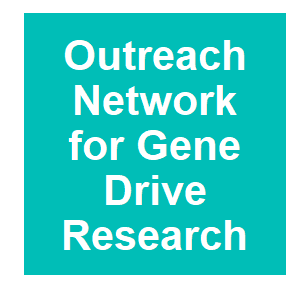
|
Gene Drive Systems To Control Aedes Aegypti Mosquitoes Make HeadwayJoshua Ang, Outreach Network for Gene Drive Research, 2024.
Aedes aegypti mosquitoes are known vectors of several diseases, including dengue, chikungunya, yellow fever, and Zika, which impact millions of people worldwide each year. The effectiveness of existing insecticide-based methods to control this mosquito is threatened by growing ... Keywords: Cas9, CRISPR, drosophila, gene drive synthetic, homing drive, split drive, suzukii |

|
Viruses that ‘infect’ viruses: Cas12f1 and Cas9 gene drive in HSV1Hongsheng Dai, Qiaorui Yao, Zhuangjie Lin, Keyuan Lai, Xianyin Zeng, Guangxiong Lei, Tongwen Zhang, bioRxiv, 2023.
Cas9-based synthetic gene drives constitute some minimal elements capable of editing DNA with sequence specificity. However, they face high resistance rate and mitigation strategies developed so far are difficult to implement. Here, we engineered herpes simplex virus type 1 ... Keywords: Cas9, CRISPR, drosophila, gene drive synthetic, homing drive, split drive, suzukii |

|
Generating and testing reagents for CRISPR/Cas9 based homologous recombination and gene drive in TriboliumC. M. Hannah, J. H. Kennedy, M. Megan, E. Z. Gabriel, W. Michael and Z. Andrew, bioRxiv, 2023.11.07.566100. 2023.
CRISPR/Cas9 gene drive systems are possible in a few insects and ever expanding. Nonetheless, success in one species and techniques developed for it are not necessarily applicable to other species. As such, the development and expansion of gene drive systems is dependent upon ... Keywords: Cas9, CRISPR, drosophila, gene drive synthetic, homing drive, split drive, suzukii |

|
Overriding Mendelian inheritance in Arabidopsis with a CRISPR toxin-antidote gene drive that impairs pollen germinationL. Yang, J. Bingke, C. Jackson and Q. Wenfeng, bioRxiv, 2023.10.10.561637. 2023.
Synthetic gene drives, inspired by natural selfish genetic elements, present transformative potential for disseminating traits that benefit humans throughout wild populations, irrespective of potential fitness costs. Here, we constructed a gene drive system called CRISPR-Assisted ... Keywords: Cas9, CRISPR, drosophila, gene drive synthetic, homing drive, split drive, suzukii |

|
MGDrivE 3: A decoupled vector-human framework for epidemiological simulation of mosquito genetic control tools and their surveillanceA. Mondal, C. H. M. Sanchez and J. M. Marshall, bioRxiv, 2023.09.09.556958. 2023.
We present MGDrivE 3 (Mosquito Gene Drive Explorer 3), a new version of a previously-developed framework, MGDrivE 2, that investigates the spatial population dynamics of mosquito genetic control systems and their epidemiological implications. The new framework incorporates three ... Keywords: Cas9, CRISPR, drosophila, gene drive synthetic, homing drive, split drive, suzukii |

|
A migration-selection model in genetic engineeringY. Qi and L. Su, Nonlinear Analysis: Real World Applications, 75:103983. 2023.
We investigate a migration-selection system arising from CRISPR-Cas9 genetic engineering, which describes the evolution of the frequencies of a wild allele O, a drive allele D, and a brake allele B. The purpose is to see whether the drive allele D can persist in the population ... Keywords: Cas9, CRISPR, drosophila, gene drive synthetic, homing drive, split drive, suzukii |

|
CRISPR/Cas9-Based Gene Drive Could Suppress Agricultural PestsM. Kulikowski, Current Science Daily, 2023.
Researchers have developed a “homing gene drive system” based on CRISPR/Cas9 that could be used to suppress populations of Drosophila suzukii vinegar flies – so-called “spotted-wing Drosophila” that devastate soft-skinned fruit in North America, Europe and parts of ... Keywords: Cas9, CRISPR, drosophila, gene drive synthetic, homing drive, split drive, suzukii |

|
CRISPR-based gene drives generate super-Mendelian inheritance in the disease vector Culex quinquefasciatusT. Harvey-Samuel, X. Feng, E. M. Okamoto, D.-K. Purusothaman, P. T. Leftwich, L. Alphey and V. M. Gantz, bioRxiv, 2023.06.12.544656. 2023.
Culex mosquitoes pose a significant public health threat as vectors for a variety of diseases including West Nile virus and lymphatic filariasis, and transmit pathogens threatening livestock, companion animals, and endangered birds. Rampant insecticide resistance makes ... Keywords: Cas9, CRISPR, drosophila, gene drive synthetic, homing drive, split drive, suzukii |
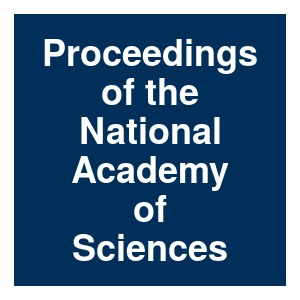
|
CRISPR/Cas9-based split homing gene drive targeting doublesex for population suppression of the global fruit pest Drosophila suzukiiA. K. Yadav, C. Butler, A. Yamamoto, A. A. Patil, A. L. Lloyd and M. J. Scott, Proc Natl Acad Sci U S A, 120:e2301525120. 2023.
Genetic-based methods offer environmentally friendly species-specific approaches for control of insect pests. One method, CRISPR homing gene drive that target genes essential for development, could provide very efficient and cost-effective control. While significant progress has ... Keywords: Cas9, CRISPR, drosophila, gene drive synthetic, homing drive, split drive, suzukii |

|
CRISPR-mediated germline mutagenesis for genetic sterilization of Anopheles gambiae malesA. L. Smidler, D. G. Paton, G. M. Church, W. R. Shaw and F. Catteruccia, bioRxiv, 2023.06.13.544841. 2023.
Rapid spread of insecticide resistance among anopheline mosquitoes threatens malaria elimination efforts, necessitating development of alternative vector control technologies. Sterile Insect Technique (SIT) has been successfully implemented in multiple insect pests to suppress ... Keywords: Cas9, CRISPR, drosophila, gene drive synthetic, homing drive, split drive, suzukii |

|
Rapid, scalable, combinatorial genome engineering by marker-less enrichment and recombination of genetically engineered loci in yeastM. Abdullah, B. M. Greco, J. M. Laurent, R. K. Garge, D. R. Boutz, M. Vandeloo, E. M. Marcotte and A. H. Kachroo, Cell Rep Methods, 3:100464. 2023.
A major challenge to rationally building multi-gene processes in yeast arises due to the combinatorics of combining all of the individual edits into the same strain. Here, we present a precise and multi-site genome editing approach that combines all edits without selection ... Keywords: Cas9, CRISPR, drosophila, gene drive synthetic, homing drive, split drive, suzukii |

|
Genetic Tools for Integrated Management of Pests on Honeybees in the TropicsM. Pattabhiramaiah, S. Mallikarjunaiah and D. Brueckner, Genetic Methods and Tools for Managing Crop Pests, 2022.
The Asian honeybee is endemic to Asia where it has been used for honey production and pollination services from time immemorial. They are integral to modern agricultural productivity and to survival and vitality of natural ecosystems. However, recent declines in populations and ... Keywords: Cas9, CRISPR, drosophila, gene drive synthetic, homing drive, split drive, suzukii |

|
A theory of resistance to multiplexed gene drive demonstrates the significant role of weakly deleterious natural genetic variationB. S. Khatri and A. Burt, Proceedings of the National Academy of Sciences, 119:e2200567119. 2022.
CRISPR-based gene drives have the potential for controlling natural populations of disease vectors, such as malaria-carrying mosquitoes in sub-Saharan Africa. If successful, they hold promise of significantly reducing the burden of disease and death from malaria and many other ... Keywords: Cas9, CRISPR, drosophila, gene drive synthetic, homing drive, split drive, suzukii |

|
CRISPR-Mediated Genome Engineering in Aedes aegyptiR. Sun, M. Li, C. J. McMeniman and O. S. Akbari, piRNA: Methods and Protocols, 2022.
CRISPR-mediated genome engineering technologies have been adapted to a wide variety of organisms with high efficiency and specificity. The yellow fever mosquito, Aedes aegyptiAedes aegypti, is one such organism. It is also responsible for transmitting a wide variety of deadly ... Keywords: Cas9, CRISPR, drosophila, gene drive synthetic, homing drive, split drive, suzukii |

|
Active genetics comes aliveV. M. Gantz and E. Bier, BioEssays, 2022.
Abstract Clustered Regularly Interspaced Short Palindromic Repeats (CRISPR)-based ?active genetic? elements developed in 2015 bypassed the fundamental rules of traditional genetics. Inherited in a super-Mendelian fashion, such selfish genetic entities offered a variety of ... Keywords: Cas9, CRISPR, drosophila, gene drive synthetic, homing drive, split drive, suzukii |

|
Leveraging a natural murine meiotic drive to suppress invasive populationsL. Gierus, A. Birand, M. D. Bunting, G. I. Godahewa, S. G. Piltz, K. P. Oh, A. J. Piaggio, D. W. Threadgill, J. Godwin, O. Edwards, P. Cassey, J. V. Ross, T. A. A. Prowse and P. Q. Thomas, bioRxiv, 2022.05.31.494104. 2022.
Invasive rodents, including house mice, are a major cause of environmental damage and biodiversity loss, particularly in island ecosystems. Eradication can be achieved through the distribution of rodenticide, but this approach is expensive to apply at scale, can have negative ... Keywords: Cas9, CRISPR, drosophila, gene drive synthetic, homing drive, split drive, suzukii |

|
Double-tap gene drive uses iterative genome targeting to help overcome resistance allelesA. L. Bishop, V. López Del Amo, E. M. Okamoto, Z. Bodai, A. C. Komor and V. M. Gantz, Nat Commun, 13:2595. 2022.
Homing CRISPR gene drives could aid in curbing the spread of vector-borne diseases and controlling crop pest and invasive species populations due to an inheritance rate that surpasses Mendelian laws. However, this technology suffers from resistance alleles formed when the ... Keywords: Cas9, CRISPR, drosophila, gene drive synthetic, homing drive, split drive, suzukii |
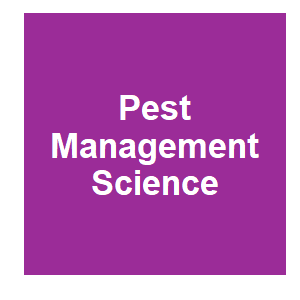
|
CRISPR/Cas9 mediates efficient site-specific mutagenesis of the odorant receptor co-receptor (Orco) in the malaria vector Anopheles sinensisY. Wang, X. F. He, L. Qiao, Z. R. Yu, B. Chen and Z. B. He, Pest Management Science, 11. 2022.
BACKGROUND Anopheles sinensis is the most widely distributed mosquito species and is the main transmitter of Plasmodium vivax malaria in China. Most previous research has focused on the mechanistic understanding of biological processes in An. sinensis and novel ways of ... Keywords: Cas9, CRISPR, drosophila, gene drive synthetic, homing drive, split drive, suzukii |
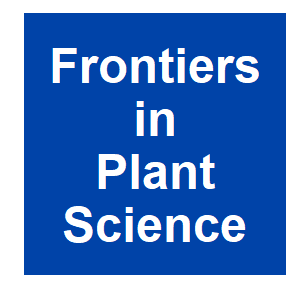
|
Biotechnological Road Map for Innovative Weed ManagementA. C. S. Wong, K. Massel, Y. Lam, J. Hintzsche and B. S. Chauhan, Frontiers in Plant Science, 13. 2022.
In most agriculture farmlands, weed management is predominantly reliant on integrated weed management (IWM) strategies, such as herbicide application. However, the overuse and misuse of herbicides, coupled with the lack of novel active ingredients, has resulted in the uptrend of ... Keywords: Cas9, CRISPR, drosophila, gene drive synthetic, homing drive, split drive, suzukii |

|
Modelling homing suppression gene drive in haplodiploid organismsY. Liu and J. Champer, Proceedings of the Royal Society B: Biological Sciences, 289:20220320. 2022.
Gene drives have shown great promise for suppression of pest populations.These engineered alleles can function by a variety of mechanisms, but themost common is the CRISPR homing drive, which converts wild-type allelesto drive alleles in the germline of heterozygotes. Some ... Keywords: Cas9, CRISPR, drosophila, gene drive synthetic, homing drive, split drive, suzukii |

|
Explainer: The Gene Drive TechnologyP. Shah, CRISPR Medicine News, 2022.
Gene drives are genetic elements that can quickly spread through populations and have nearly a 100% chance of passing the genes they carry to the next generation. Synthetic gene drive is a technology of genetic engineering through which certain desired traits can be introduced to ... Keywords: Cas9, CRISPR, drosophila, gene drive synthetic, homing drive, split drive, suzukii |
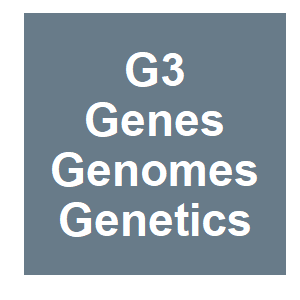
|
A homing suppression gene drive with multiplexed gRNAs maintains high drive conversion efficiency and avoids functional resistance allelesE. Yang, M. Metzloff, A. M. Langmuller, X. J. Xu, A. G. Clark, P. W. Messer and J. Champer, G3-Genes Genomes Genetics, 13. 2022.
Gene drives are engineered alleles that can bias inheritance in their favor, allowing them to spread throughout a population. They could potentially be used to modify or suppress pest populations, such as mosquitoes that spread diseases. CRISPR/Cas9 homing drives, which copy ... Keywords: Cas9, CRISPR, drosophila, gene drive synthetic, homing drive, split drive, suzukii |
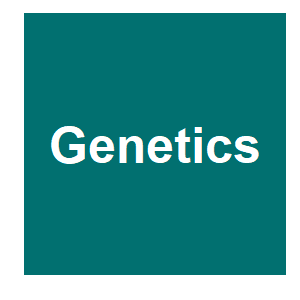
|
Cas9-mediated maternal-effect and derived resistance alleles in a gene-drive strain of the African malaria vector mosquito, Anopheles gambiaeR. Carballar-Lejarazú, T. Tushar, T. B. Pham and A. A. James, Genetics, 2022.
CRISPR/Cas9 technologies are important tools for the development of gene-drive systems to modify mosquito vector populations to control the transmission of pathogens that cause diseases such as malaria. However, one of the challenges for current Cas9-based drive systems is their ... Keywords: Cas9, CRISPR, drosophila, gene drive synthetic, homing drive, split drive, suzukii |

|
A homing suppression gene drive with multiplexed gRNAs maintains high drive conversion efficiency and avoids functional resistance allelesE. Yang, M. Metzloff, A. M. Langmüller, X. Xu, A. G. Clark, P. W. Messer and J. Champer, bioRxiv, 2021.05.27.446071. 2022.
Gene drives are engineered alleles that can bias inheritance in their favor, allowing them to spread throughout a population. They could potentially be used to modify or suppress pest populations, such as mosquitoes that spread diseases. CRISPR/Cas9 homing drives, which copy ... Keywords: Cas9, CRISPR, drosophila, gene drive synthetic, homing drive, split drive, suzukii |

|
Modelling homing suppression gene drive in haplodiploid organismsY. Liu and J. Champer, bioRxiv, 2021.10.12.464047. 2022.
Gene drives have shown great promise for suppression of pest populations. These engineered alleles can function by a variety of mechanisms, but the most common is the CRISPR homing drive, which converts wild-type alleles to drive alleles in the germline of heterozygotes. Some ... Keywords: Cas9, CRISPR, drosophila, gene drive synthetic, homing drive, split drive, suzukii |

|
High-resolution in situ analysis of Cas9 germline transcript distributions in gene-drive Anopheles mosquitoesG. Terradas, A. Hermann, A. A. James, W. McGinnis and E. Bier, G3-Genes Genomes Genetics, 2021.
Gene drives are programmable genetic elements that can spread beneficial traits into wild populations to aid in vector-borne pathogen control. Two different drives have been developed for population modification of mosquito vectors. The Reckh drive (vasa-Cas9) in Anopheles ... Keywords: Cas9, CRISPR, drosophila, gene drive synthetic, homing drive, split drive, suzukii |

|
Modeling homing suppression gene drive in haplodiploid organismsY. Liu and J. Champer, bioRxiv, 2021.10.12.464047. 2021.
Gene drives have shown great promise for suppression of pest populations. These engineered alleles can function by a variety of mechanisms, but the most common is the CRISPR homing drive, which converts wild-type alleles to drive alleles in the germline of heterozygotes. Some ... Keywords: Cas9, CRISPR, drosophila, gene drive synthetic, homing drive, split drive, suzukii |

|
Scientists use gene editing tool to target mosquito-spread diseaseMedical Research Council, Phys Org, 2021.
Advances in genome editing have allowed the development of genetic insect control methods, which could be highly effective and are species-specific. The results have been published in Scientific Reports. Scientists showed that a method involving a gene editing tool called ... Keywords: Cas9, CRISPR, drosophila, gene drive synthetic, homing drive, split drive, suzukii |

|
Population genomics of invasive rodents on islands: Genetic consequences of colonization and prospects for localized synthetic gene driveK. P. Oh, A. B. Shiels, L. Shiels, D. V. Blondel, K. J. Campbell, J. R. Saah, A. L. Lloyd, P. Q. Thomas, F. Gould, Z. Abdo, J. R. Godwin and A. J. Piaggio, Evolutionary Applications, 2021.
Here we used pooled whole-genome sequencing of invasive mouse (Mus musculus) populations on four islands along with paired putative source populations to test genetic predictions of island colonization and characterize locally fixed Cas9 genomic targets. Patterns of variation ... Keywords: Cas9, CRISPR, drosophila, gene drive synthetic, homing drive, split drive, suzukii |

|
Targeting evolutionary conserved sequences circumvents the evolution of resistance in a viral gene drive against human cytomegalovirusM. Walter, R. Perrone and E. Verdin, bioRxiv, 2021.01.08.425902. 2021.
Here, we analyze in cell culture experiments the evolution of resistance in a gene drive against human cytomegalovirus. We report that after an initial invasion of the wildtype population, a drive-resistant population is positively selected over time and outcompetes gene drive ... Keywords: Cas9, CRISPR, drosophila, gene drive synthetic, homing drive, split drive, suzukii |

|
New GE unintentionally leaves traces in cellsC. Then, Testbiotech, 2020.
A new scientific publication shows that CRISPR/Cas gene scissor applications in animals unintentionally leave traces. The findings are not related to unintended changes in the DNA, which have often been described, but to gene regulation, i.e. epigenetics. The effects are ... Keywords: Cas9, CRISPR, drosophila, gene drive synthetic, homing drive, split drive, suzukii |

|
The Antiviral Small-Interfering RNA Pathway Induces Zika Virus Resistance in Transgenic Aedes aegyptiA. E. Williams, I. Sanchez-Vargas, W. R. Reid, J. Y. Lin, A. W. E. Franz and K. E. Olson, Viruses, 12:18. 2020.
We used CRISPR/Cas9 to re-target a previously characterized locus (Chr2:321382225) and engineered mosquitoes expressing an inverted repeat (IR) dsRNA against the NS3/4A region of the ZIKV genome. Small RNA analysis revealed that the IR effector triggered the mosquito's siRNA ... Keywords: Cas9, CRISPR, drosophila, gene drive synthetic, homing drive, split drive, suzukii |

|
Evading resistance to gene drivesR. Gomulkiewicz, M. L. Thies and J. J. Bull, bioRxiv, 2020.08.27.270611. 2020.
Our analyses suggest that among gene drives that cause moderate suppression, toxin-antidote systems are less apt to select for resistance than homing drives. Single drives of moderate effect might cause only moderate population suppression, but multiple drives (perhaps delivered ... Keywords: Cas9, CRISPR, drosophila, gene drive synthetic, homing drive, split drive, suzukii |

|
Gene Drives Could Kill Mosquitoes And Suppress Herpesvirus InfectionsA. Berezow, American Council on Science and Health, 2020.
A team of researchers writing in the journal Nature Communications has shown that a gene drive can be used to suppress infection with cytomegalovirus, a type of herpesvirus. Keywords: Cas9, CRISPR, drosophila, gene drive synthetic, homing drive, split drive, suzukii |

|
Computational and experimental performance of CRISPR homing gene drive strategies with multiplexed gRNAsS. E. Champer, S. Y. Oh, C. Liu, Z. Wen, A. G. Clark, P. W. Messer and J. Champer, Science Advances, 6:eaaz0525. 2020.
The rapid evolution of resistance alleles poses a major obstacle for genetic manipulation of populations with CRISPR homing gene drives. One proposed solution is using multiple guide RNAs (gRNAs), allowing a drive to function even if some resistant target sites are present. Here, ... Keywords: Cas9, CRISPR, drosophila, gene drive synthetic, homing drive, split drive, suzukii |

|
Genome engineering in insects: focus on the CRISPR/Cas9 systemHillary, V. Edwin Ceasar, Stanislaus Antony Ignacimuthu, S., Genome Engineering via CRISPR-Cas9 System, 2020.
Genome engineering is a precise tool used to alter the genome of desired organism. Zinc finger nuclease (ZFN), transcription activator-like effector nucleases (TALENs) and clustered regularly interspaced short palindromic repeats (CRISPR), and the CRISPR-associated RNA guided ... Keywords: Cas9, CRISPR, drosophila, gene drive synthetic, homing drive, split drive, suzukii |

|
Development of a confinable gene drive system in the human disease vector Aedes aegyptiM. Li, T. Yang, N. P. Kandul, M. Bui, S. Gamez, R. Raban, J. Bennett, H. M. Sánchez C, G. C. Lanzaro, H. Schmidt, Y. Lee, J. M. Marshall and O. S. Akbari, eLife, 9:e51701. 2020.
Aedes aegypti is the principal mosquito vector for many arboviruses that increasingly infect millions of people every year. With an escalating burden of infections and the relative failure of traditional control methods, the development of innovative control measures has become ... Keywords: Cas9, CRISPR, drosophila, gene drive synthetic, homing drive, split drive, suzukii |
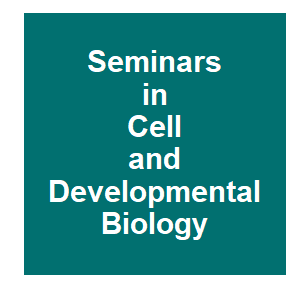
|
Improving plant-resistance to insect-pests and pathogens: The new opportunities through targeted genome editingD. S. Bisht, V. Bhatia and R. Bhattacharya, Seminars in Cell & Developmental Biology, 96:65-76. 2019.
The advantages of high input agriculture are fading away due to degenerating soil health and adverse effects of climate change. Safeguarding crop yields in the changing environment and dynamics of pest and pathogens, has posed new challenges to global agriculture. Thus, ... Keywords: Cas9, CRISPR, drosophila, gene drive synthetic, homing drive, split drive, suzukii |

|
Modulating CRISPR gene drive activity through nucleocytoplasmic localization of Cas9 in S. cerevisiaeM. E. Goeckel, E. M. Basgall, I. C. Lewis, S. C. Goetting, Y. Yan, M. Halloran and G. C. Finnigan, Fungal Biology Biotechnology, 6:2. 2019.
In this study, we use artificial gene drives in budding yeast to explore mechanisms to modulate nuclease activity of Cas9 through its nucleocytoplasmic localization. We examine non-native nuclear localization sequences (both NLS and NES) on Cas9 fusion proteins in vivo through ... Keywords: Cas9, CRISPR, drosophila, gene drive synthetic, homing drive, split drive, suzukii |

|
A Multiple Gene Drive SystemFerdinand Nanfack Minkeu, IGTRCN, 2019.
Yan & Finnigan, (2018) recently published a paper in Scientific Reports describing an artificial multi-locus gene drive system by using a single Cas9 and three guide RNA (gRNA) in the budding yeast Saccharomyces cerevisiae. Nuclease-based gene drives do not follow the typical ... Keywords: Cas9, CRISPR, drosophila, gene drive synthetic, homing drive, split drive, suzukii |
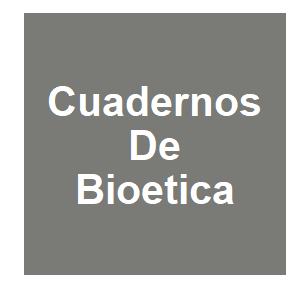
|
CRISPR-Cas9. The greatest advancement in genetic edition techniques requires an ethical reflectionGomez-Tatay, LA, J., Cuadernos De Bioetica, 30:171-185. 2019.
The adaptation of the CRISPR system as a genetic editing tool has led to a revolution in many fields of application, as this technique is considerably faster, easier to perform and more efficient than predecessor techniques. However, some of these applications raise objective ... Keywords: Cas9, CRISPR, drosophila, gene drive synthetic, homing drive, split drive, suzukii |

|
Cas9 Gene Drive, Sex-Conversion and Evolved ResistanceAnna Buchman, IGTRCN, 2018.
In a recent manuscript, KaramiNejadRanjbar et al. demonstrate the development of a proof of principle Cas9-based suppression gene drive in D. melanogaster that can be applied to pest insects, and discuss the implications of resistance allele formation for practical use of such a ... Keywords: Cas9, CRISPR, drosophila, gene drive synthetic, homing drive, split drive, suzukii |

|
What is CRISPR?A. Vidyasagar, LiveScience, 2018.
CRISPR technology is a simple yet powerful tool for editing genomes. It allows researchers to easily alter DNA sequences and modify gene function. Its many potential applications include correcting genetic defects, treating and preventing the spread of diseases and improving ... Keywords: Cas9, CRISPR, drosophila, gene drive synthetic, homing drive, split drive, suzukii |

|
Gene drive inhibition by the anti-CRISPR proteins AcrIIA2 and AcrIIA4 in Saccharomyces cerevisiaeBasgall, EMG, S. C.; Goeckel, M. E.; Giersch, R. M.; Roggenkamp, E.; Schrock, M. N.; Halloran, M.; Finnigan, G. C., Microbiology-Sgm, 164:464-474. 2018.
Given the widespread use and application of the clustered regularly interspaced short palindromic repeats (CRISPR)/Cas gene editing system across many fields, a major focus has been the development, engineering and discovery of molecular means to precisely control and regulate ... Keywords: Cas9, CRISPR, drosophila, gene drive synthetic, homing drive, split drive, suzukii |
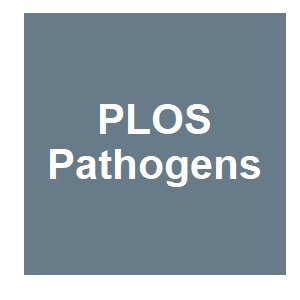
|
CRISPR/Cas9 -mediated gene knockout of Anopheles gambiae FREP1 suppresses malaria parasite infectionDong, YS, Maria L.; Marois, Eric; Dimopoulos, George, PLOS Pathogens, 14:e1006898. 2018.
The causative agent of malaria, Plasmodium, has to complete a complex infection cycle in the Anopheles gambiae mosquito vector in order to reach the salivary gland from where it can be transmitted to a human host. The parasite’s development in the mosquito relies on numerous ... Keywords: Cas9, CRISPR, drosophila, gene drive synthetic, homing drive, split drive, suzukii |

|
The promise and peril of CRISPR gene drivesZentner, GEW, Michael J. C., Bioessays, 39:1-9. 2017.
Gene drives are selfish genetic elements that use a variety of mechanisms to ensure they are transmitted to subsequent generations at greater than expected frequencies. Synthetic gene drives based on the clustered regularly interspersed palindromic repeats (CRISPR) genome editing ... Keywords: Cas9, CRISPR, drosophila, gene drive synthetic, homing drive, split drive, suzukii |

Contact
David O’Brochta
Foundation for the
National Institutes of Health
geneconvenevi@fnih.org
RSS

